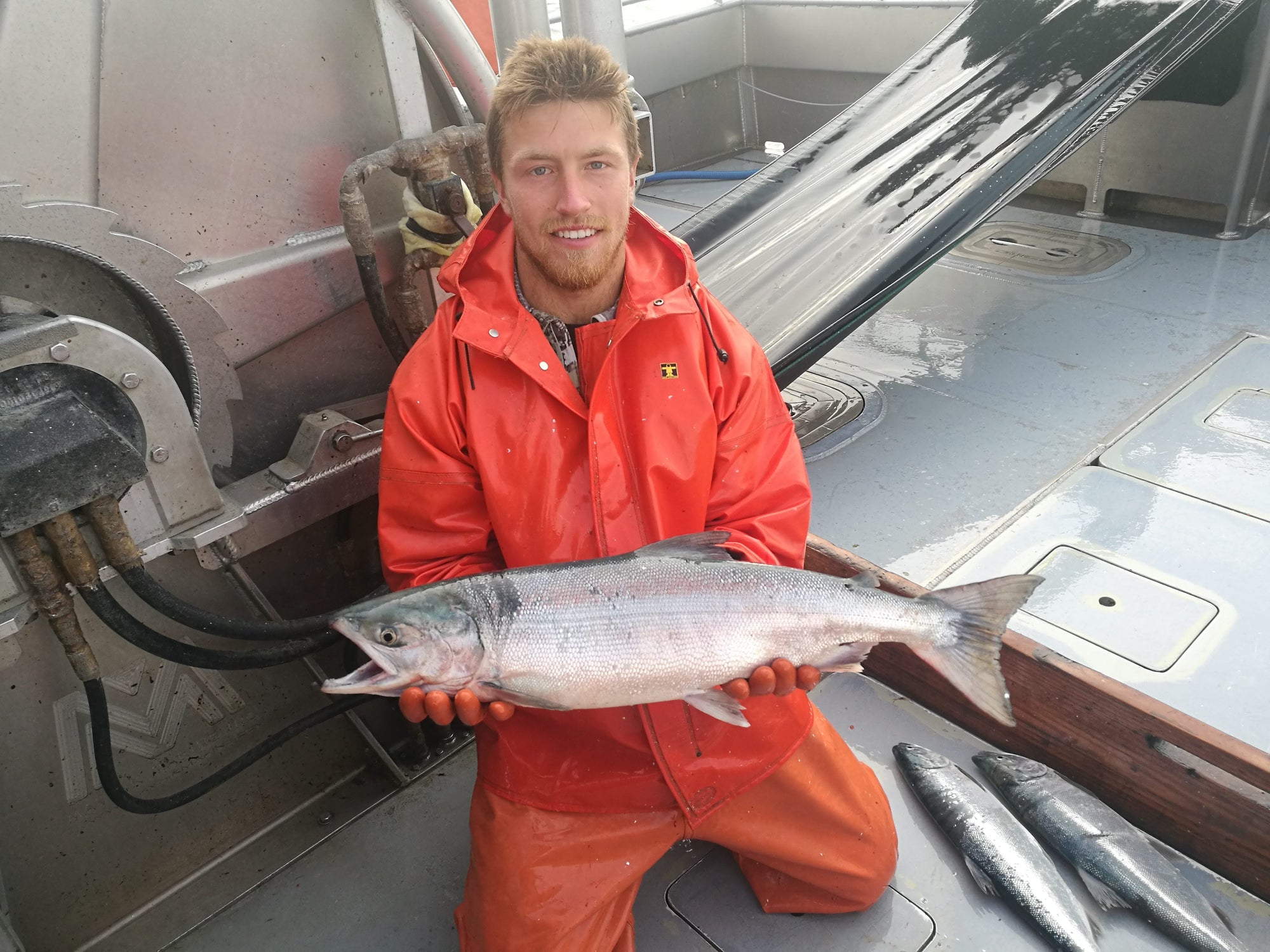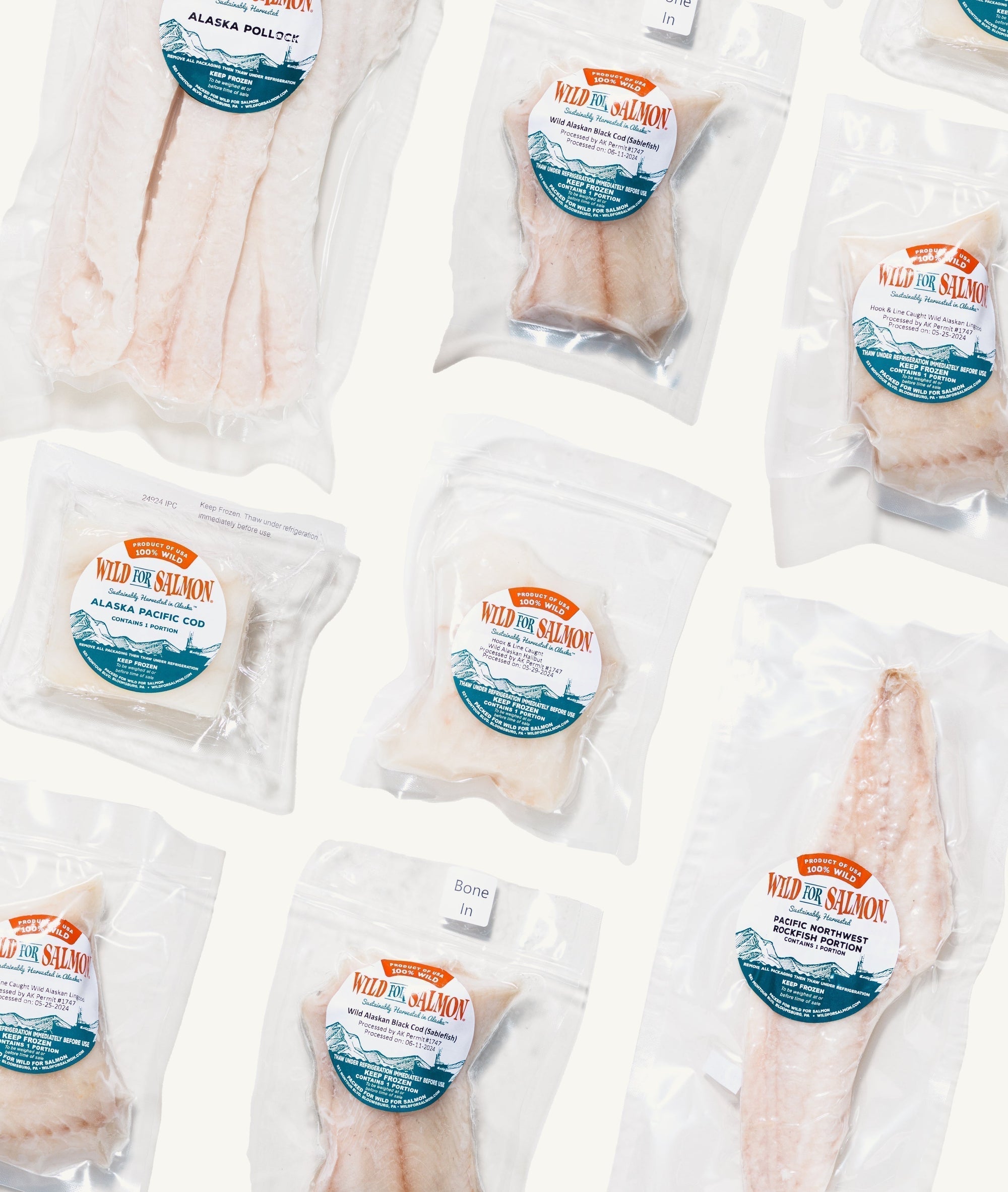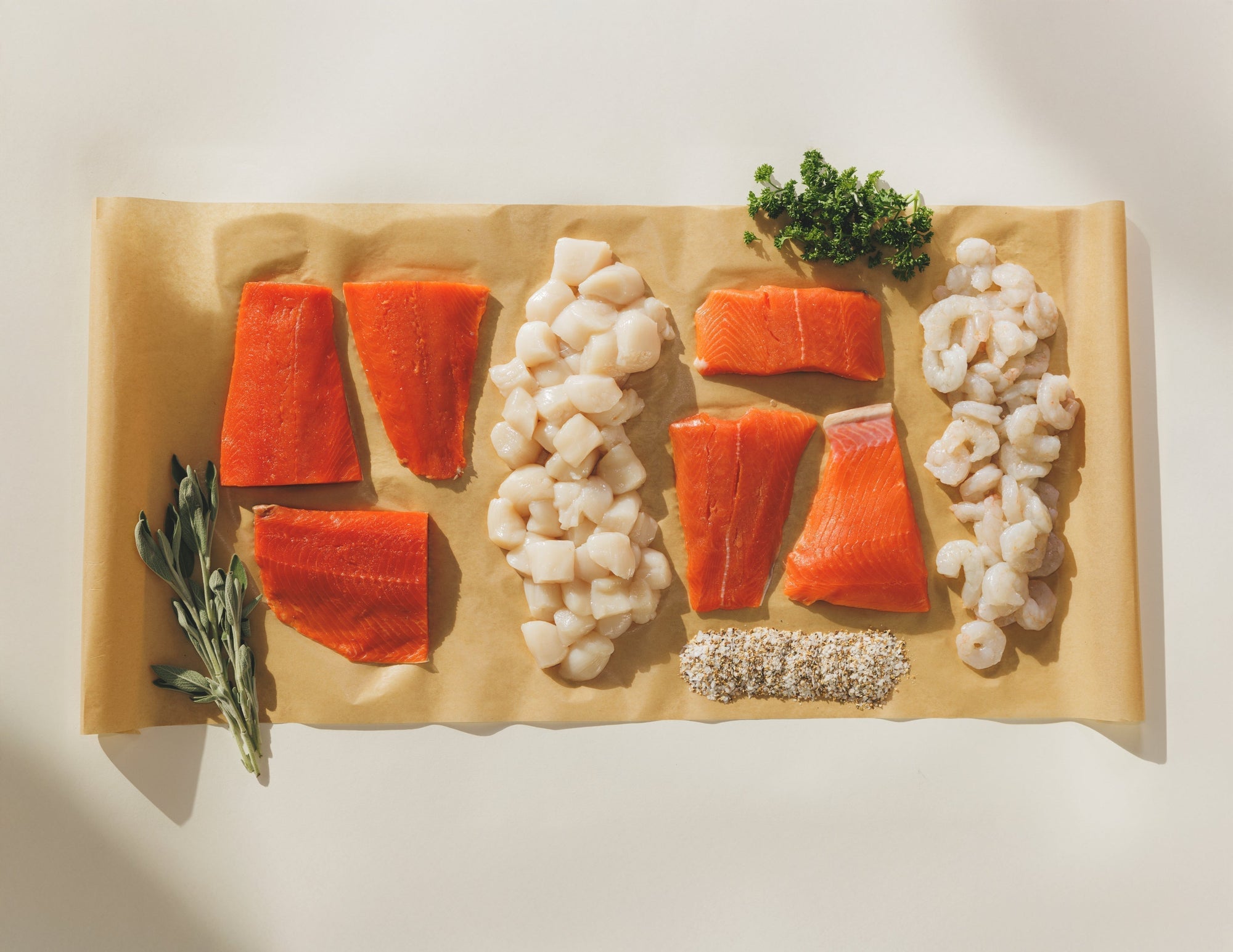What Sets Sockeye Salmon Apart from the Rest

Deckhand Logan holds a glistening sockeye salmon aboard the F/V Ava Jane in Bristol Bay, Alaska.
There are five wild Alaskan salmon species—King, Sockeye, Coho, Keta, and Pink. All are delicious, all are nutrient-rich. But one has a particularly powerful reputation: Sockeye salmon. Sometimes called “red salmon” for its jewel-toned flesh, sockeye is abundant in Bristol Bay and loaded with health benefits.
This fish is as much about nourishment as it is about story: centuries of migration, the largest wild salmon run in the world, and a flavor bold enough to stand on its own. Let’s explore what makes sockeye salmon truly unique.
Health Benefits of Sockeye Salmon
The nickname brain food is well earned. Sockeye is packed with omega-3 fatty acids—nutrients that fuel cognitive health, support mood balance, and even help stave off depression. These same omega-3s are also warriors for your heart, lowering inflammation and reducing the risk of coronary disease.
Beyond that, sockeye is:
-
Protein-rich: Higher in protein than most other salmon species.
-
Vitamin D source: Supports bone strength and immunity.
-
Low in saturated fat: Especially when compared to farmed salmon.
Simply put: if you’re looking for a lean, nutrient-dense protein to anchor your diet, wild sockeye salmon is an ideal choice.
Where Sockeye Salmon Lives
Sockeye salmon thrive throughout the North Pacific Ocean, from Oregon’s Deschutes River to the northernmost Alaskan waters. But the beating heart of the sockeye story lies in Bristol Bay, Alaska.
Each summer, an average of 38 million sockeye return to the five rivers of Bristol Bay, creating the world’s largest commercial sockeye salmon fishery. This pristine run is carefully managed and unmanipulated, ensuring its abundance continues for generations.
When you choose Bristol Bay sockeye, you’re not only choosing one of the healthiest fish in the ocean—you’re also supporting a fishery that sustains local communities, ecosystems, and future salmon runs.
Wild vs. Farmed: Why It Matters
Both farmed and wild salmon contain omega-3s and protein—but that’s where the similarities end.
-
Wild Sockeye Salmon
-
Rich in omega-3s that are truly “brain healthy.”
-
Naturally lean, with fewer calories.
-
Free of artificial coloring or additives—its red flesh is 100% natural from its diet of plankton and krill.
-
Raised in pristine waters, not crowded pens.
-
-
Farmed Salmon
-
Higher in saturated fat and inflammatory omega-6s.
-
Often exposed to antibiotics and man-made chemicals (including PCBs).
-
Colored with synthetic carotenoids due to limited diet.
-
Choosing wild is choosing purity, sustainability, and health.

When Is Sockeye Salmon in Season?
Sockeye salmon are anadromous—spending most of their adult life in the ocean, then returning to their birthplace in freshwater to spawn.
-
In Bristol Bay, the run begins in late May each year.
-
The commercial harvest happens mid-June to mid-August, when sockeye are at their prime: rich in healthy fat and perfect for the table.
-
As soon as they’re caught, the fish are chilled to 32°F and flash-frozen within hours, locking in peak freshness for you to enjoy year-round.
It’s like meeting an athlete in the peak of their career—you get sockeye at its absolute best.
How to Cook Sockeye Salmon
Sockeye is known for its firm texture and robust flavor, making it one of the most versatile salmon species in the kitchen.
-
Grill – Its flesh holds together beautifully over flame.
-
Bake – Roast at 350°F until opaque and flaking.
-
Pan-Sear – Quick and crisp in a cast iron skillet with salt, pepper, and coconut oil.
-
Poach – Gentle heat brings out sockeye’s clean, oceanic flavor.
-
Smoke – With a brown sugar brine, sockeye takes on deep, rich flavor without drying out.
Sockeye also shines in burgers, salads, and even breakfast dishes (try a spicy sockeye patty with eggs). Whether simple or dressed with spices and herbs, it’s a fish that never disappoints.

Sockeye Salmon and Your Diet
Sockeye salmon adapts beautifully to many eating plans:
-
Keto: High protein, healthy fats, zero carbs.
-
Kosher-friendly: Salmon is a kosher fish, even skinned, due to its distinctive color and scales.
-
Family meals: Portion-friendly packs mean you can thaw just what you need.
Whether you’re feeding kids, meal-prepping for the week, or following a specific diet, sockeye salmon offers both nutrition and flexibility.
Why We’re Proud of Sockeye
At Wild for Salmon, we believe wholeheartedly in the benefits of wild sockeye. It’s why we built our business, why we spend summers fishing in Bristol Bay, and why our own families eat this fish multiple times a week.
Sockeye isn’t just healthy—it’s a story of resilience, sustainability, and flavor worth celebrating. And it’s always our mission to deliver it to you in the best possible way: wild, sustainable, flash-frozen, and ready for your table.




